The Clean Energy Age
The Clean Energy Age
A Guide to Beating Climate Change
BF Nagy
Rowman & Littlefield
Lanham Boulder New York London
Published by Rowman & Littlefield
An imprint of The Rowman & Littlefield Publishing Group, Inc.
4501 Forbes Boulevard, Suite 200, Lanham, Maryland 20706
www.rowman.com
Unit A, Whitacre Mews, 26-34 Stannary Street, London SE11 4AB
Copyright 2018 by BF Nagy
All rights reserved . No part of this book may be reproduced in any form or by any electronic or mechanical means, including information storage and retrieval systems, without written permission from the publisher, except by a reviewer who may quote passages in a review.
British Library Cataloguing in Publication Information Available
Library of Congress Cataloging-in-Publication Data
Names: Nagy, B. F., 1956 author.
Title: The clean energy age : a guide to beating climate change / BF Nagy.
Description: Lanham, Maryland : Rowman & Littlefield, [2018] | Includes bibliographical references and index.
Identifiers: LCCN 2018008348 (print) | LCCN 2018028917 (ebook) | ISBN 9781538115763 (electronic) | ISBN 9781538115787 (cloth : alk. paper)
Subjects: LCSH: Renewable energy sourcesPopular works. | Energy policyPopular works. | Climatic changesPrevention.
Classification: LCC TJ808 (ebook) | LCC TJ808 .N34 2018 (print) | DDC 333.79dc23
LC record available at https://lccn.loc.gov/2018008348
 The paper used in this publication meets the minimum requirements of American National Standard for Information SciencesPermanence of Paper for Printed Library Materials, ANSI/NISO Z39.48-1992.
The paper used in this publication meets the minimum requirements of American National Standard for Information SciencesPermanence of Paper for Printed Library Materials, ANSI/NISO Z39.48-1992.
Printed in the United States of America
The time has come for a different kind of conversation about climate change.
Now we need a plana practical, step-by-step how-to road map with Top 10 lists of priority actions for each of us, based on the best practices of leading climate change experts.
For Adrian
This book came into being thanks to the gracious support of Anne Devlin, Suzanne Staszak-Silva, Elizabeth Loan, Edward Shea, John Bennett, Mike Schreiner, Paul Nagy, and Rosanne Trudel. Thanks also to Scott McKenzie, Joanne Kravetz, Steven A. Leibo, Michael Berrill, Nathaniel Erskine-Smith, Simon Blake, Sarah Cimarusti, Max Miller, and Sharon Rehana.
Introduction
How?
Its a whole new discussion. Now the key question is How?
Almost everyone, incredibly, finally agrees. Powerful people in Davos, leaders in Beijing and Brussels, and many in Washington and the earths other major countries are on board. Executives in the worlds biggest investment banks, commercial banks, insurance companies, and reinsurers, as well as the most successful corporations, consultants, and entrepreneursthey want action. Government leaders of the largest states and cities in the United States are well advanced in implementing clean energy programs. The United Nations, the International Monetary Fund (IMF), the Pentagon, NASA, the planets leading scientists, science academies, universities, and think tankstheyve all reached a consensus.
The globes major media organizations, foundations, global charity organizations, churches, and nonprofits are on the same page. Planners, builders, architects, and engineers concur, as do financial advisers, journalists, schoolteachers, entertainers, medical leaders, agricultural organizations, manufacturing and transportation people, drivers, and janitors. We even have the support of the Association for the Preservation of the Coelacanth! (Its a prehistoric fish.) Were all finally thinking in the same direction.
Well, not everyone. Theres an eighty-one-year-old conservative in Oklahoma who still thinks its a hoax and wrote a book about itbut most of the rest of us have finally agreed on a few realities.
First, climate change is a serious problem and an opportunity. Second, the cost of ignoring itto the planet, our economies, our health, and our propertyis untenable. Third, the positive economic and health benefits offered by climate change solutions are numerous and historically significant.
Most of us now accept that we should immediately address climate change by modernizing our energy systems and moving the global economy into a technologically progressive era. In 2015, representatives from all over the earth came together in Paris, where these ideas became the basis for a written agreement. One goal. One planet. One home.
National Governments
Because of political structures and the expense associated with success in public office, national governments continue to try to balance the interests of those whose preferences are entrenched in obsolete technology with those of modern players who are building the world of tomorrow.
But it is becoming increasingly difficult to ignore the local job growth, competitive cost, investment trends, and other economic fundamentals related to one of the fastest-growing American businesses: clean energy. The countrys best new strategy for energy independence may eventually be reevaluated in Washington, D.C., because it has become business as usual for governing and utility programming in Texas, California, Washington State, Iowa, Oklahoma, Utah, Colorado, Massachusetts, New York, New Jersey, Hawaii, and many other states and municipalities.
In this book, you will find information detailing how the groups are moving forward. Well, except for the people down near Madagascar trying to save the coelacanthwe have not had a recent update on their support.
There remains one key conundrum: Although we have reached a seemingly unlikely global consensus among the 7 billion of us on earth, few agree on exactly how to repair our planet. There are some opinions about what are the most important solutions, but studies indicate that most of us admit that we dont know exactly how to solve it.
The mission of this book is to bring together decades of research and the experience of hundreds of technical and other experts to lay the groundwork for a conversation that must advance quickly and result in a plan that is easy to understand and implement.
It starts with How?
A Practical Step-by-Step Plan
This book talks a little about ethics and morality, but in large part it deals with practical matters. It provides a set of Top 10 Lists of priority action steps to help beat climate change for people in different walks of life or different situations, such as home owners, businesspeople, government officials, and other groups.
The following chapters often discuss how to save money on energy. In the past, environmentalists have been somewhat hesitant to focus on saving money, preferring to emphasize benefits to society as a whole. Its time to recognize and fully discuss both points. Although we all want to be good citizens, a lot of us have children who depend on us or career dreams to pursue and mortgages and school bills to pay. For many of us, ethics matter but are a little further down the priority list. Can we have it all? Yes. The experts say that we can both save our species and save money. Thats a key message here.
A great deal of progress has already been made with our climate change problem and has gone unreported. Environmentalists have long been deliberately diverted from positive messages and called on to refute misinformation, which at times has led to passionate reinforcement of evidential realities. This situation sometimes results in an exhausting repetition of doom and gloom that overshadows any good news. This book attempts to increase awareness of the positive stories and trends to help inspire you to join the effort.
It also continues to deal with misinformation. There are facts. There are myths. There are alternate universes, such as certain tabloids and blog pages. Lets have an adult conversation.
Next page
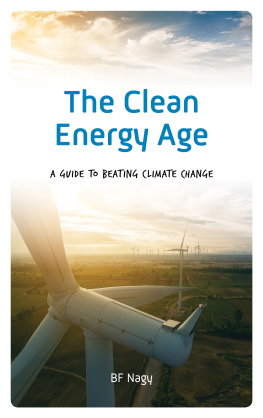

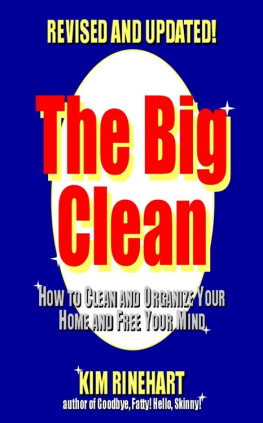
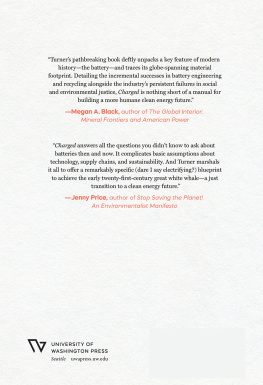

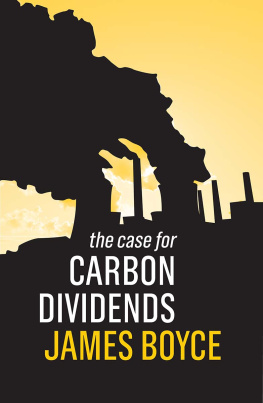
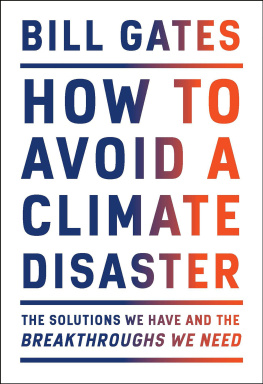




 The paper used in this publication meets the minimum requirements of American National Standard for Information SciencesPermanence of Paper for Printed Library Materials, ANSI/NISO Z39.48-1992.
The paper used in this publication meets the minimum requirements of American National Standard for Information SciencesPermanence of Paper for Printed Library Materials, ANSI/NISO Z39.48-1992.